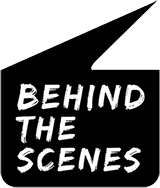Team meetings are no longer happening in the boardroom or the breakout room – they’re taking place in a Zoom room. As video replaces face-to-face interactions, fostering a culture of collaboration amongst your team can be hard. Even though you’re not with them in person, your nonverbal signals are still communicated and open to interpretation via video, making or breaking your connection with your team.
Collaboration requires warmth
As Carol Kinsey Goman, author of “The Silent Language of Leaders: How Body Language Can Help – or Hurt How You Lead“, explains in this Forbes article, there are two sets of body language cues that people instinctively look for in leaders. One set projects warmth and caring, the other signals power and status.
Whilst both are necessary for any leader, if you want to foster collaboration amongst your team, Goman advises that the ‘warmer’ side of your nonverbal communication should become your central focus.
Today’s new work environment
You’re sitting in your home office, on your seventh Zoom call for the day. Perhaps you have your Ugg boots on, hidden from view under the desk. Your cat is walking across the screen or your dog is begging for a walk. A toddler is demonstrating their vocal capacity and your neighbour has decided to mow the lawn right outside your office window.
Welcome to today’s new working environment!
Outside of the office, it can be easy to forget that when you’re on screen, your team is still able to see, interpret and read into your nonverbal cues. Those cues come in four forms: your body language and facial expressions, your personal appearance and your surrounding environment. They all submit signals that your team receives and decodes, whether you’re in person or on a video call.
Fostering collaboration over video
If you want to build cohesion, encourage participation, foster collaboration, and make sure your team members know – and feel – that you genuinely care about them, it pays to consider the nonverbal signals you’re sending. Goman suggests the following:
- A genuine smile (one that comes on slowly, crinkles the eyes, lights up the face, and fades away slowly) not only stimulates your own sense of well-being, it also tells those around you that you are approachable, cooperative, and trustworthy.
- Nodding your head – with clusters of three nods at regular intervals – signals that you are actively listening to them.
- Head tilting signals that you are interested, curious, and involved. It’s a universal gesture of giving the other person an ear, thereby encouraging them to expand on their comments.
- Eye contact is one of the most powerful motivators to encourage participation – people feel they have your attention and interest as long as you are looking at them.
- Synchronising, or matching the body language of your team members signals that you are connected and engaged. We tend to do this subconsciously when we are talking with someone we like or have a genuine interest in.
- Uncrossing your legs and arms, with palms exposed or hands resting on the desk makes you look more receptive.
- Leaning forward tends to increase the verbal output of the person they’re speaking with.
- Facing people directly prevents you creating a barrier between the two of – even a quarter turn can suggest giving someone the “cold shoulder”, signalling a lack of interest and causing the speaker to shut down.
- Turning off your phone, closing the door and limiting as many distractions as possible helps you stay focused on your team and give them the attention they deserve.
So, on your next video call, do a body language check. Ask yourself: are you projecting warmth and helping to foster collaboration?
